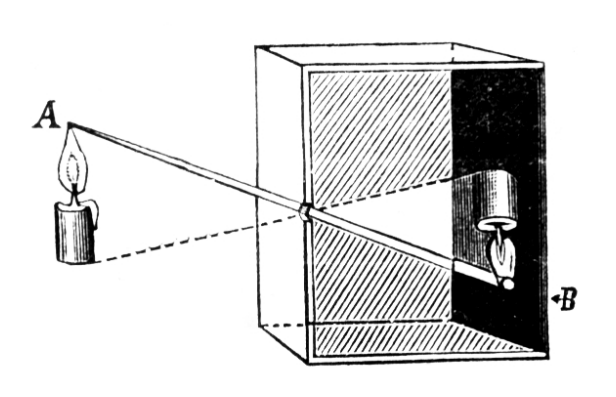3.2: The Camera Obscura
- Page ID
- 57085
The camera obscura or pinhole camera is the simplest image forming system. It consists of a closed box with a pinhole on one side. An inverted image is cast on the opposite side of the box as shown in Figure 3.2.1. If the hole is too large, the image is very blurred. At the cost of less light, the image can be made sharper by reducing the aperture The camera obscura can form images of objects across an extremely wide angular field due to great depth of focus and over a large range of distances (great depth of field) as you can see in the right picture of Figure \(\PageIndex{1}\). If a film would be used to record the image, very long exposure times are however needed because only a small amount of light enters the pinhole, (f-number=500). It is believed that painters such as Johannes Vermeer have used the camera obscura to make paintings of external scenes.


